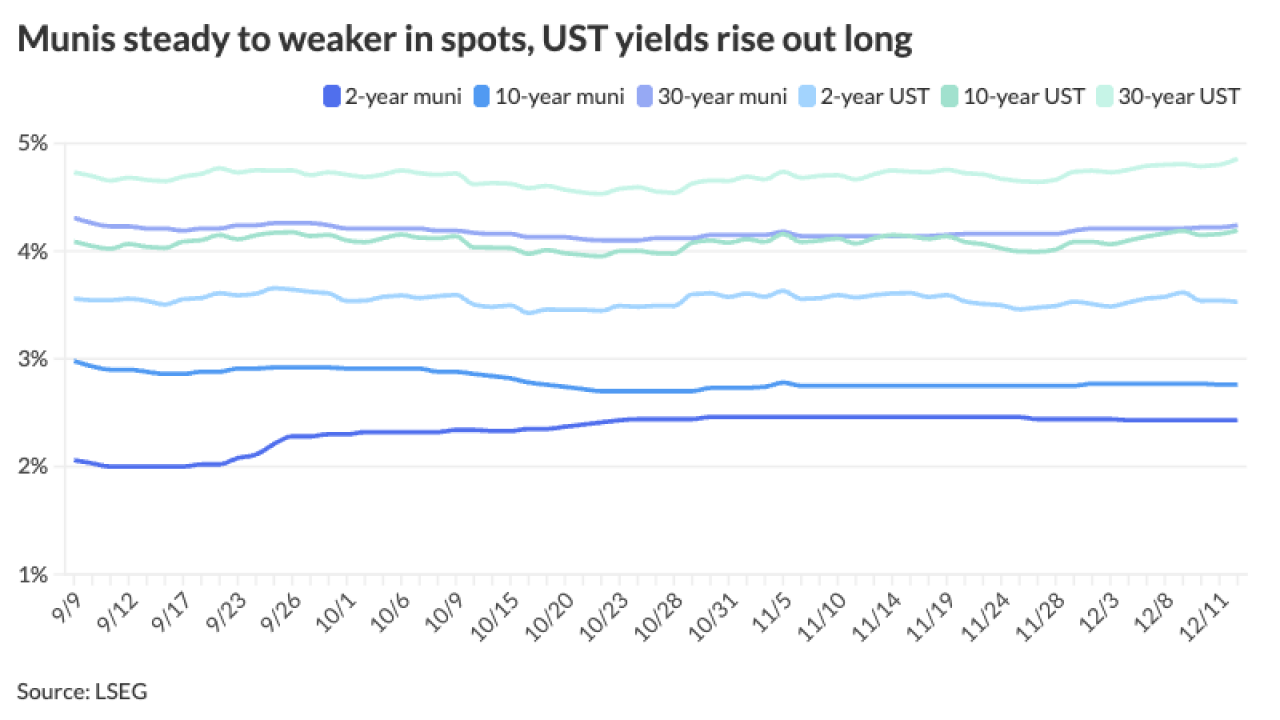VALLEJO, Calif. - The long, slow financial bleed of Vallejo, Calif., reached the low point of bankruptcy Tuesday night, as city leaders admitted they would run out of cash in a couple of months and be forced to shut down the government.
After months of cutting costs and begging unions for concessions, the City Council's vote to file for Chapter 9 bankruptcy protection was accompanied by the sounds of a cheering, whistling, and applauding audience. The combination of declining tax revenue and surging public safety salaries convinced lawmakers they had no other choice. Vallejo is the largest California city to seek protection from creditors and the second-largest municipality in the state after Orange County to do so.
"I've turned over every rock I could find," said Mayor Osby Davis, who has been mayor for five months and held out against the Chapter 9 filing until last night. "We don't have the ability to pay our debts as they come due."
Orange County declared the largest municipal bankruptcy in history in 1994. The two cases are different because Orange County was an otherwise prosperous community that made bad investments in the derivatives market. Working-class Vallejo has relatively little debt, with just over $200 million of bonds and certificates of participation outstanding, but it cannot pay its operating expenses because it has promised police and firefighters higher salaries than it can pay.
Vallejo administrators last night projected a $4.3 million general fund deficit for the fiscal year that ends June 30 and a $16 million gap for fiscal 2008-2009. Officials blame their financial woes on legal limits on raising revenues in California, previous City Councils that didn't hold the line on pay increases, and a sharp slowdown in the housing market. Tax revenues increased just 2.6% over the past two years, while salaries and benefits have surged 11%. Public safety now eats up about three-quarters of the $83 million general fund.
The city's general fund-supported debt is unrated. Standard & Poor's yesterday downgraded the Vallejo Public Financing Authority's Vallejo-Glen Cove Community Assessment District revenue bonds to B from A-minus.
The city's bankruptcy lawyer has said he expects such dedicated revenues to continue to flow to bondholders, but Standard & Poor's analyst Lisa Schroeer said there are few precedents in municipal bankruptcies and a judge may decide otherwise.
"The bonds will likely qualify as special revenues," Standard & Poor's said in a report. But "it is possible that the debt service reserve could be deemed inaccessible by the courts and this could further compromise bond payments."
Standard & Poor's also cut Vallejo certificates of participation secured by California motor vehicle license fees to B from A on uncertainty over the fate of the dedicated revenue stream in the bankruptcy filing.
Finance director Robert Stout said the city's deficits have grown every year since it posted a $3.2 million budget gap in fiscal 2005-2006. Its public safety salaries are set by a formula that ties them to 14 other local cities. Some of those cities, like Palo Alto, are much wealthier, but cities across the region, including Oakland, San Jose, and San Francisco, are increasing police salaries rapidly as they seek to fill hundreds of open police officer jobs.
Vallejo, a city of 120,000, sits on San Pablo Bay at the southern edge of the Napa Valley, about 30 miles northeast of San Francisco. Its Mare Island Naval Shipyard, shuttered in 1996, was the nation's biggest shipyard during World War II. The city has been working to redevelop its waterfront and downtown. But Davis said those projects will have to go on hold now because the city will no longer be able to tap the municipal bond market.
"Bankruptcy is a long, long road and a very damaging process," he said.
Vallejo has already begun to feel the pain of its exile from the bond market. The city has $71 million of variable-rate COPs that are remarketed weekly, according to a staff report published yesterday. Since it began considering bankruptcy in February, investors have been tendering the certificates to Vallejo's letter of credit provider, Union Bank of California, prompting penalty rates of 9%.
State Sen. Pat Wiggins, D-Santa Rosa, sent a letter asking the city to put off the filing again because bankruptcy would taint the financial reputations of other local government bodies and do long-term harm to Vallejo's economic development efforts. Wiggins represents the city in Sacramento. Realtor and Chamber of Commerce board member Verna Mustico told the council the filing would only worsen the city's deep housing market slump.
The City Council decided to go ahead with the bankruptcy filing after it failed to coax salary concessions out of its public unions. Vallejo pays more than $170,000 a year in total compensation for its average firefighter. Public safety workers agreed to temporary pay cuts on March 3, keeping the city afloat this fiscal year. City manager Joseph Tanner takes home more than $400,000 a year in total compensation, making him one of the highest paid public employees in the state.
Local residents packed the City Council chambers last night, cheering speakers who spoke in favor of setting aside the city's debts and booing anyone who spoke against bankruptcy. The leaders of the city's employee unions got the most boos. The council approved the filing unanimously.
Vallejo has already cut services drastically. The police department has cut 55 positions since 2001, eliminating its narcotics squad and giving up on enforcing all but the most serious property crimes.
City officials warned that bankruptcy isn't an easy way out of the city's debts and told residents they are sure to see lower services and higher taxes and fees. Finance director Stout said Vallejo is exploring increases in fees for emergency medical services, as well as the possibility of asking voters to approve a sales tax increase in November.
"We are not going to get out of this anytime soon if we do not increase our revenues," said council member Erin Hannigan. "This is dire. We are at rock bottom."
Chapter 9 bankruptcy is not like Chapter 11, which relieves a corporation of its obligations, said Marc Levinson of Orrick, Herrington & Sutcliffe LLP, the city's lawyers. A city's assets can't be liquidated to make creditors whole, and federal judges face limits in imposing a solution because of constitutional protections of states' rights.
But the filing does give a municipality breathing room to renegotiate its obligations. The bankruptcy judge can reject the filing if she or he feels the city is not actually insolvent, and city employee unions last night pledged to fight the bankruptcy in court on the grounds that Vallejo has not exhausted its revenue raising options.
Levinson said the city will file its petition "very soon," but he would not give an exact date. He said he expects the case to be heard in Sacramento. After filing, the city will have to submit a "pendency plan" to the bankruptcy court that will guide its spending while it restructures its debt, he told the council. He refused to discuss the city's strategy for negotiating with bondholders or its letter of credit provider.
City officials said legal fees related to the filing could cost as much as $2 million. Levinson estimated that the case could take anywhere from one to three years.





